 The impressive image on the outside front cover highlights a hot article from Hyo-Bang Moon and coworkers at Hanyang University, the National Fisheries Products Quality Inspection Service and the National Fisheries Research & Development Institute, Korea. Their study is the first to assess the methyl mercury residues and total mercury content in seafood consumed in Korea – an important constituent of the population’s diet. Their research found Hg levels to be below the threshold intake levels suggested by international authorities and thus will provide a baseline for future monitoring and risk management.
The impressive image on the outside front cover highlights a hot article from Hyo-Bang Moon and coworkers at Hanyang University, the National Fisheries Products Quality Inspection Service and the National Fisheries Research & Development Institute, Korea. Their study is the first to assess the methyl mercury residues and total mercury content in seafood consumed in Korea – an important constituent of the population’s diet. Their research found Hg levels to be below the threshold intake levels suggested by international authorities and thus will provide a baseline for future monitoring and risk management.
Exposure assessment for methyl and total mercury from seafood consumption in Korea, 2005 to 2008
Hyo-Bang Moon, Sang-Jo Kim, Hyejin Park, Yun Sun Jung, Suuggyu Lee, Yun-Hee Kim and Minkyu Choi
J. Environ. Monit., 2011, 13, 2400-2405
DOI: 10.1039/C1EM10504C
 The image on the inside front cover depicts another hot article from Hsing-Lung Lien at the National Tawain University with colleagues from the National University of Kaohsiung, Tawain. They have designed a zero-valent copper nanoparticles for the hydrodechlorination of 1,2-dichloroethane.
The image on the inside front cover depicts another hot article from Hsing-Lung Lien at the National Tawain University with colleagues from the National University of Kaohsiung, Tawain. They have designed a zero-valent copper nanoparticles for the hydrodechlorination of 1,2-dichloroethane.
1,2-DCA is a raw material used in vinyl chloride monomer (VCM) and polyvinyl chloride (PVC) manufacturing processes, and improper handling has lead to groundwater contamination in many places. As 1,2-DCA can cause circulatory and respiratory failure, and is a suspected carcinogen, remediation technologies are needed to deal with this contaminant. The authors hope their copper nanoparticles could be immobilised on the surface of reducing metals to form a reactive bimetallic structure for environmental remediation applications.
Catalytic hydrodechlorination of 1,2-dichloroethane using copper nanoparticles under reduction conditions of sodium borohydride
Chang-Chieh Huang, Shang-Lien Lo, Shin-Mu Tsai and Hsing-Lung Lien
J. Environ. Monit., 2011, 13, 2406-2412
DOI: 10.1039/C1EM10370A
Interested? Why not view the rest of Issue 9?
 A hot article from Michael F. Hochella and colleagues Virginia Tech and Duke University is on the cover of our latest issue, describing their work to better understand the fate of TiO2 nanomaterials in soil, and their most likely route of entry into the environment.
A hot article from Michael F. Hochella and colleagues Virginia Tech and Duke University is on the cover of our latest issue, describing their work to better understand the fate of TiO2 nanomaterials in soil, and their most likely route of entry into the environment.










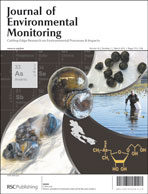 On the outside front cover of JEM
On the outside front cover of JEM 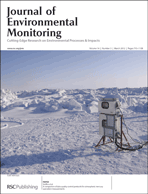 On the inside front cover is a HOT article from Alexandra Steffen and colleagues from Environment Canada and the National Atmospheric Deposition Program (NADP) at the University of Illinois, reporting on a comparison of their data quality control protocols for the measurement of atmospheric mercury species. The protocols RDMQ™ and AMQC were developed independently by Environment Canada and the NADP respectively, and have been assessed by the criteria on which the data is quality controlled and comparability of the final data products.
On the inside front cover is a HOT article from Alexandra Steffen and colleagues from Environment Canada and the National Atmospheric Deposition Program (NADP) at the University of Illinois, reporting on a comparison of their data quality control protocols for the measurement of atmospheric mercury species. The protocols RDMQ™ and AMQC were developed independently by Environment Canada and the NADP respectively, and have been assessed by the criteria on which the data is quality controlled and comparability of the final data products.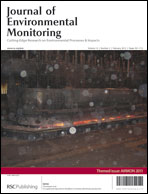 Welcome to our second issue of the year, which includes a collection of articles from
Welcome to our second issue of the year, which includes a collection of articles from 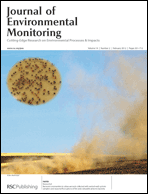 The second is from Subbarao V. Ravva et al. on the sampling and influence of environmental conditions on airborne bacteria:
The second is from Subbarao V. Ravva et al. on the sampling and influence of environmental conditions on airborne bacteria: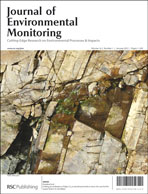 In 2012 we welcome a new Chair to our Editorial Board, Frank Wania, University of Toronto and thank Professor Deborah Swackhamer for all her work as previous Chair.
In 2012 we welcome a new Chair to our Editorial Board, Frank Wania, University of Toronto and thank Professor Deborah Swackhamer for all her work as previous Chair. 







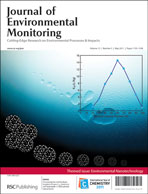 Our latest issue is a collection of articles on the theme of
Our latest issue is a collection of articles on the theme of 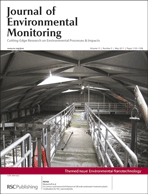 The
The